Worm infestation in children is one of the most common and underestimated the risk of the disease. Worms in children, provokes not only insufficient intake of nutrients in the body, but also cause allergic reactions, chronic toxicity, low immunity, illnesses and injuries, gastro-intestinal tract. Signs of parasitosis develop immediately, for a long time, the disease can be asymptomatic or unexpressed clinical picture and determined only by laboratory analysis.
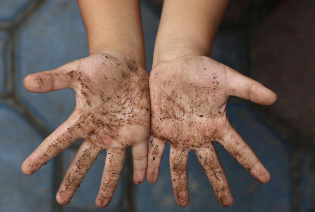
Incidence and types of worms
It is considered that the helminthiasis, infection with worms is a disease, more related to people's social backgrounds is below average, living in unsanitary conditions, often contact with infected animals or soil. However, statistics show that only European countries, helminths found in the survey, every third patient.
In nature, there are more than 300 species of helminths, more than 70 species distributed in Russia, the rest can come from the human body during travel to exotic countries. Among all the different types of parasitic worms that can exist in the human body, there are three groups:
- nematodes belonging to round helminths, some of the most common parasites in children (pinworm, whipworm, Trichinella, roundworm);
- ribbon (flat) worms, related to the cestoda (tapeworm, tapeworms and Echinococcus);
- parasites-flukes, or trematodes, becoming a cause of opisthorchiasis, the tribe to be able to cause liver disease, chistoso, paragonimoz, etc.
In most cases helminths parasitize and multiply in the intestine, but eggs and larvae can spread through the bloodstream to different organs. Most often it affects the nearby organs of the digestive system: liver, gall bladder, however, the parasites can inhabit muscle tissue, the lungs, the brain.
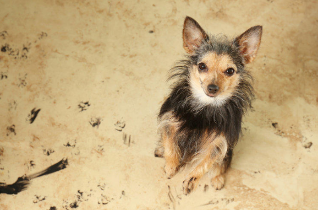
Helminthiasis: the path of infection
Methods of infection by worms depends on the characteristics of their development cycle. For some groups of helminths of the people is the main "owner", whose body they live and breed, others – intermediate. In some cases, the parasite necessary for the maturation of eggs in the soil or other conditions. But the basic rule of protection against infection is hygiene, a condition that childhood is not always.
Childhood is a period of time, resulting in the continued immunity has not yet been formed, which significantly increases the likelihood of Developing parasitosis. Want to try all the flavor, multiple contacts with soil, sand, other objects, increase the likelihood of penetration of helminth eggs in the body of the child.
The most common worms – pinworms and roundworm transferred from unwashed hands can remain on household items (door handles), from the inside of the body with the food (poorly washed berries, vegetables, vegetables). There is also the possibility of spreading worms through contact with an infected person or animal or are close with them.
Pinworms are one of the worms causing reinvasion itching, which is due to the female pinworms process in eggs outside the anus, causing the patient to touch, to RUB, to scratch the irritated surface and spread the parasite eggs in the bottom, bed linen, clothes, objects, surfaces. Repeated ingestion of the eggs, the rest the hands or the bed, reinvasion occurs, the self-infection of the patient. Primary infection in children usually occurs in plants, playgrounds, places of mass congestion of children.
What factors increase the risk of infection of the helminths?
- Non-compliance with hand hygiene: skip washing your hands after returning from the street, guests from the bathroom, before any food intake.
- Biting nails, sucking fingers, hold in the mouth a variety of objects (pens, pencils, toys, etc.).
- Pets visiting the street: even a timely anthelmintic treatment of dogs and cats can spread worms eggs, brought from the street feet, of wool.
- The wrong treatment of vegetables, fruits, berries, herbs before serving.
- The low level of hygiene in the house: wearing street shoes, before time washing the floors, etc.
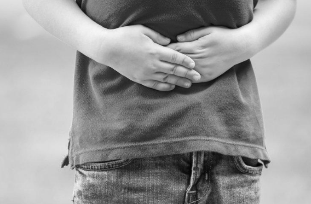
Worms in children: different the symptoms and treatment of helminthiasis
Many species of parasites for a long time do not contribute to the formation of a clear clinical picture eliminare: the goal of the parasite is there, so as not to be noticed, that the owner of the vehicle. So bright symptoms of helminthiasis can be found only in those cases when the infection is often (initially or due to the long latency period) and/or the child has reduced immunity, it is other diseases, against which the bot is more obvious. Individual situation – infestation of exotic species of parasites, causing a strong reaction from the body.
Common signs of helminthiasis in children:
- increased appetite without increasing body weight;
- increased salivation;
- symptoms of intestinal dyspepsia, flatulence, unstable stool, nausea, pain in the stomach, the right hypochondrium, spasm of the intestine;
- dizziness, headache, fatigue;
- the tendency to allergic reactions, which are not detected earlier, or more severe allergies;
- sensitivity, irritability, sleep disturbance, attention and memory associated with intoxication waste products of helminths;
- breakage, hair loss, nail exfoliation the development of vitamin a deficiency and iron deficiency;
- frequent inflammation in the nasopharynx (sinusitis, sinusitis, pharyngitis, etc.), the genitals, especially in girls, because of the anatomic proximity of the vagina and the anus.
Long-term helminth infections in children has lagged behind age norms, height, weight, development, disorders and diseases of the digestive system, symptoms of severe intoxication, anemia, allergies, frequent respiratory infections, bacterial and viral etiology, neurological abnormalities.
The first symptoms usually appear 2-4 weeks after exposure, the eggs of worms in the body. They vary depending on the number of parasites, the level of protective strength and health of the child, as well as different types of worms. So, pinworm night cause itching of the anus, which contributes to sleep disorders. This toxocarosis distinctive features are cough, with no signs of respiratory disease, fever, probable asthma and allergic reactions.
The widespread belief that bruxism, grinding teeth in sleep is a sign of the presence of worms in the body, is refuted by medical scientists. The phenomenon of bruxism is associated with the peculiarities of the human nervous system. Although the worms, especially pinworms, can interfere with sleep and contribute to neurotic children, bruxism, there is no evidence of worm infestation. Treatment of this phenomenon with the neurologists and dentists.
Long-term helminths all develop the clinical picture of intoxication.
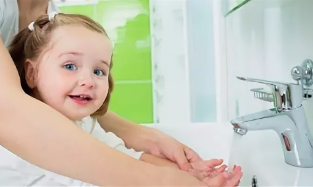
Diagnostics of helminthiasis
In most cases helminthiasis in children diagnosed because of the annual preventive medical examinations and fecal worm eggs. However, this is not the most reliable method: - present symptoms, and a negative analysis it must be remembered that not all types of worms can be defined in the same way. Those species that lay their eggs, also can avoid detection during the laboratory tests, as the frequency of breeding is not necessarily the same when the analysis. There were also cases, when the body is one or several same-sex individuals are not capable of reproduction, but harmful to the whole life cycle.
Negative fecal test is recommended to make a re-survey in 2-3 weeks. List of preventive research, according to analysis for the presence of helminth eggs and scraping on enterobiasis. Suspecting the presence of worms can also according to the results of blood tests: high eosinophils, together with the reduced level of hemoglobin in most cases means the parasites in the body.
The diagnosis can be applied to biological studies of sputum, bile, urine, faeces to the coprogram.
To clarify the diagnosis in cases with suspected Echinococcus examine organs of the abdominal membrane of the ultrasonic and/or radiographic method. Opisthorchiasis is diagnosed through analysis of gut contents and duodenal sounding.
Determine the type of parasite and caused them harm to the body help the immunological studies. When an accurate diagnosis is the chosen method of treatment.
Medicamento the methods for the treatment of helminthiasis in children
Treatment of helminthiasis is based on two direction: to get rid of parasites and toxins from the body, lowering or leveling damage to existing worms.
Relieve symptoms of poisoning appoint vitamin preparations (b, C), iron, vitamins and minerals, glucose, rate of infusion gemodeza, etc. In some cases, shows the use of diuretics, antihistamines. With the defeat of the heart muscle, liver tissue can be applied to the hormonal agents.
Maintenance treatment given chelators, deducing from the blood of slag parasites, the enzymes that help improve digestion and the functioning of the organs, etc.
When all helminth infections is highly recommended to use a broad-spectrum preparations in children. Drugs, causing the death of the parasites affect the human body, so the choice of drug and its dosage must be approached with caution.
Homemade and traditional methods to get rid of worms is definitely not recommended, due to lack of evidence and the ability to accurately measure the dosage and the likely effect on the child's body.
Principles of treatment of helminthiasis
In most cases, the treatment of helminthiasis is one family member of the treatment should be available to all, living in the area for adults and children. This applies not only very contagious askaridoza, but also in other helminthiasis. Medications, each family member is also chosen by the doctor depending on the age and state of health.
If you have animals, they are mandatory to perform anthelmintic treatment regardless of time after the prevention.
In the room where the sick child, need to make a daily hygienic cleaning, preferably at the time of treatment to remove all the carpets, soft toys, blankets. Bedding and underwear, personal towels can be changed as often as possible (pants – twice a day), after washing all linen should be carefully ironed.
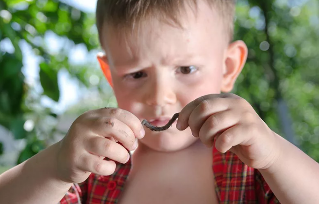
It is necessary to monitor compliance with the rules of hygiene: wash your hands after each visit to the toilet, after returning from the street, use only personal towels, short nails driving. Without rules, compliance with treatment may be ineffective, because of the constant presence of infected sources in the environment of the patient.
Prevention of infection with worms
Preventive measures primarily include the rules of personal hygiene. Most of the worm eggs are transferred to the mouth, hands, and washing your hands helps to prevent in most cases.
Other preventative measures include:
- a thorough (at least 2-3 minutes under running water) wash berries, vegetables, leafy greens before eating, if you are going to eat raw;
- long cooking river fish (40-60 minutes) before eating;
- timely prophylactic anthelmintic treatment of domestic animals;
- The general cleanliness of the house in accordance with sanitary-hygienic norms.




































